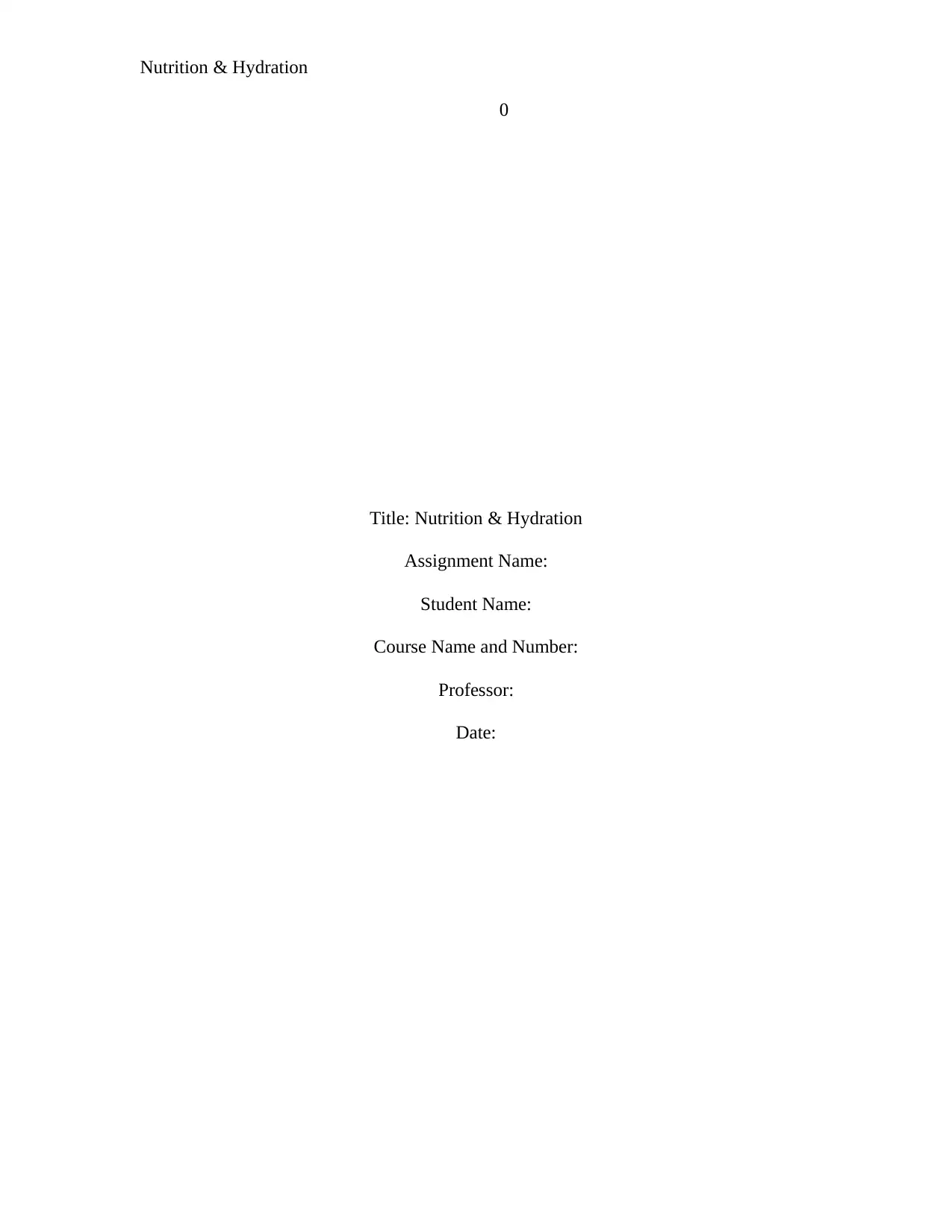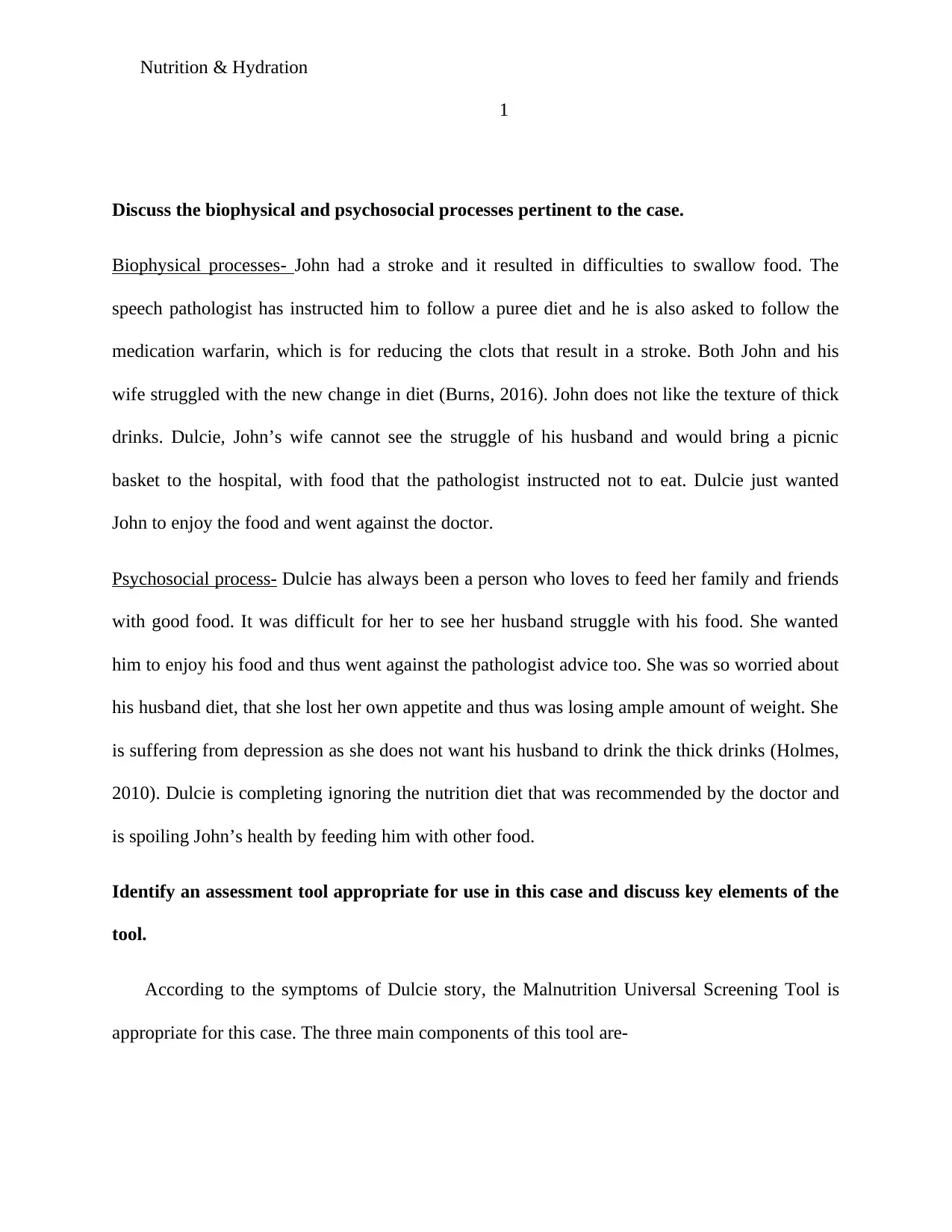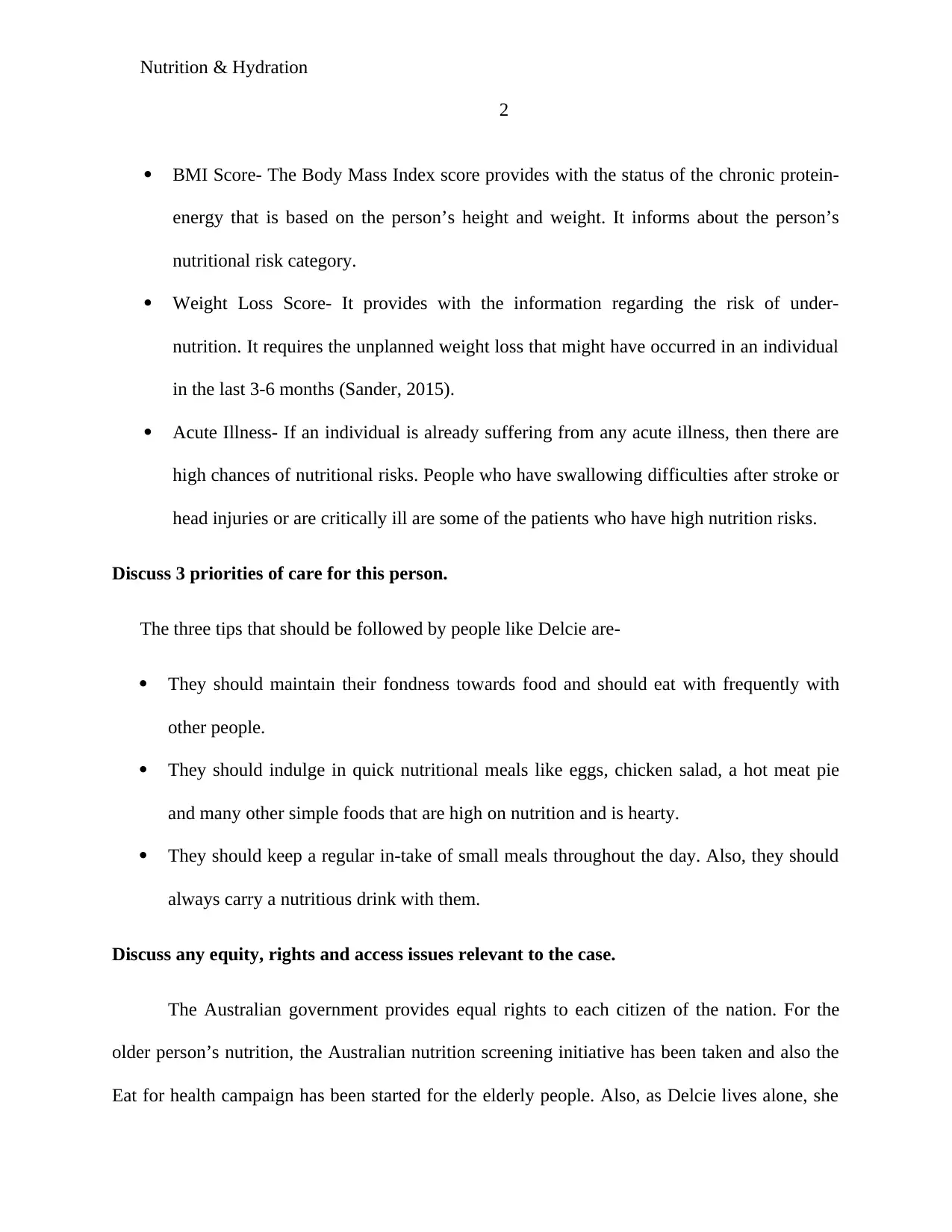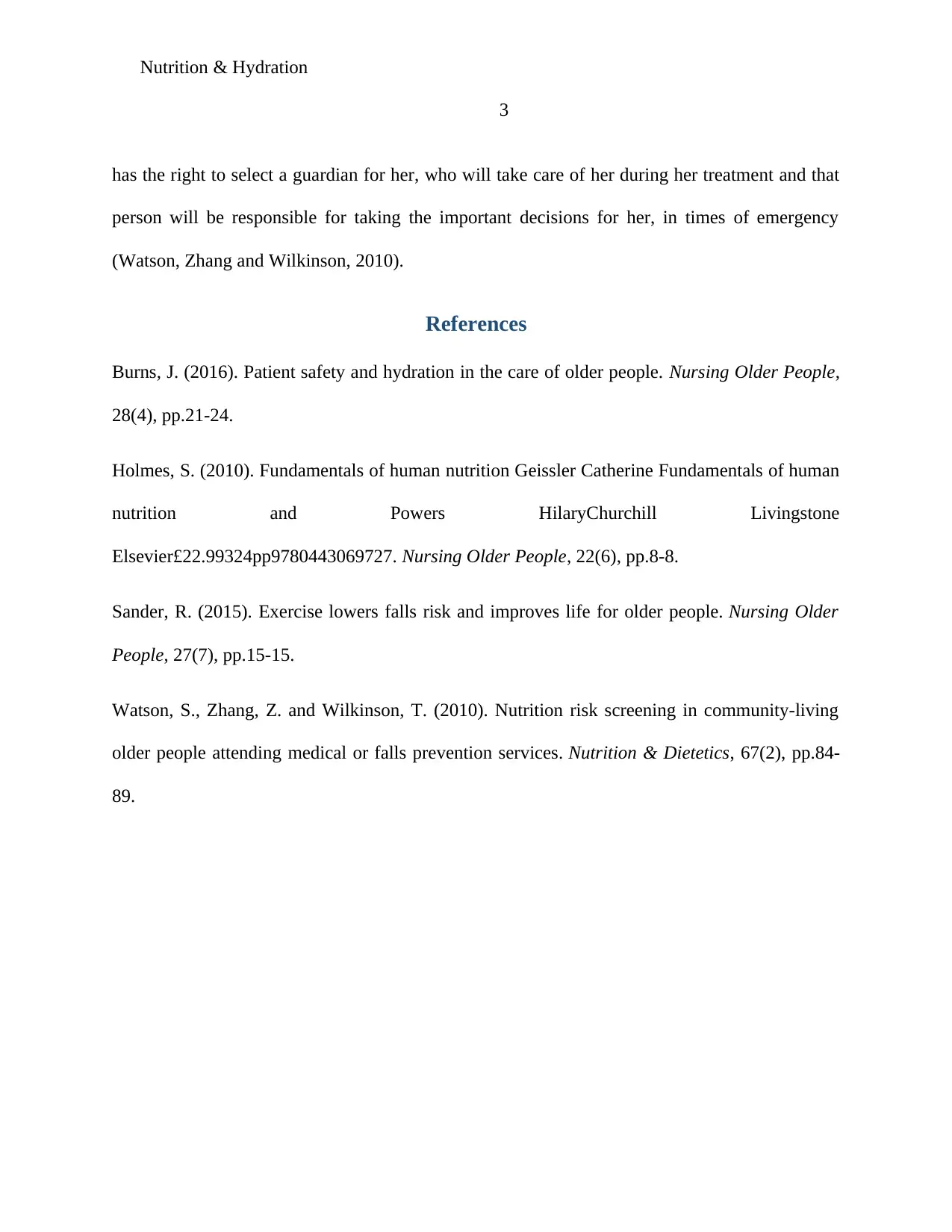In-depth Case Study: Analyzing Nutrition & Hydration and Key Elements
VerifiedAdded on 2023/06/03
|4
|808
|463
Case Study
AI Summary
This case study examines the biophysical and psychosocial processes pertinent to a patient, John, who experienced a stroke and subsequent swallowing difficulties, and his wife, Dulcie, who struggles with his dietary restrictions. It identifies the Malnutrition Universal Screening Tool (MUST) as an appropriate assessment tool, highlighting its key elements such as BMI score, weight loss score, and acute illness considerations. The study outlines three priorities of care, including maintaining fondness towards food, indulging in quick nutritional meals, and ensuring regular intake of small meals throughout the day. Furthermore, it discusses equity, rights, and access issues relevant to the case, referencing Australian government initiatives for older persons' nutrition and the right to choose a guardian for healthcare decisions. The case underscores the importance of addressing both the physical and emotional aspects of nutrition and hydration in patient care.
1 out of 4





![[object Object]](/_next/static/media/star-bottom.7253800d.svg)